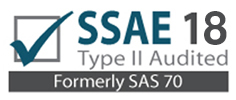Creating a custom dashboard using client_action in Odoo can be a valuable addition to any business section. Dashboards serve as a visual representation of data, enabling users to quickly and easily identify important information and make informed decisions. In this blog, we will explore the process of creating a custom dashboard using the client_action module in Odoo.
To begin, we need to create a new module in Odoo. Odoo provides a modular structure that allows developers to extend its functionality and create new features. By creating a module specifically for our custom dashboard, we can keep the code organized and easily maintainable.
Once the module is created, we can define the necessary models and views for our custom dashboard. Models represent the underlying data structure, while views determine how the data is displayed to the user. In our case, we will define a model that corresponds to the data we want to display on the dashboard and create a view that visualizes this data in a meaningful way.
Next, we can utilize the client_action module in Odoo. The client_action module provides a mechanism to define custom client-side actions that can be triggered by user interactions or events. These actions can be used to update the dashboard dynamically, fetch data from the server, or perform any other desired functionality.
We can define a client_action for our custom dashboard that retrieves the necessary data from the server and updates the dashboard accordingly. This can be achieved by defining the appropriate JavaScript code that handles the data retrieval and manipulation on the client side.
Once the client_action is defined, we can integrate it into our custom dashboard view. This integration allows the client_action to be triggered when the dashboard is loaded or when specific events occur. By connecting the client_action to the dashboard view, we ensure that the dashboard always displays the most up-to-date information.
Finally, we can enhance the functionality of our custom dashboard by adding additional features such as filters, drill-down options, or interactive elements. These enhancements can further improve the usability and effectiveness of the dashboard, allowing users to explore and analyze the data in a more interactive manner.
Step 1: Define the Dashboard Layout Decide on the structure and layout of your dashboard. Determine what information you want to display and how you want to arrange it.
Step 2: Create a New Module Create a new module in Odoo. Let's assume the module name is custom_dashboard.
Step 3: Define the Dashboard Model Create a new model that will represent your dashboard. In the models.py file of your module, define the dashboard model as follows:
from odoo import models, fields
class CustomDashboard(models.Model):
_name = 'custom.dashboard'
name = fields.Char(string='Dashboard Name', required=True)
# Add more fields as per your requirements
Step 4: Define the Dashboard View Create a view for your dashboard model. In the views/custom_dashboard_views.xml file of your module, define the dashboard view using XML. Here's an example of a simple dashboard view:
<odoo>
<data>
<record model="ir.ui.view" id="view_custom_dashboard_form">
<field name="name">custom.dashboard.form</field>
<field name="model">custom.dashboard</field>
<field name="arch" type="xml">
<form string="Custom Dashboard">
<header>
<button string="Refresh" type="object" name="refresh_dashboard" class="oe_highlight"/>
</header>
<sheet>
<!-- Add your dashboard widgets and components here -->
</sheet>
</form>
</field>
</record>
</data>
</odoo>
Step 5: Add Security Rules If necessary, define security rules to control access to your dashboard. You can specify who can view and edit the dashboard based on user roles and permissions. You can define the security rules in the security/ir.model.access.csv file of your module.
For example, to give access to the dashboard to the Odoo admin user, you can add the following line to the CSV file:
access_custom_dashboard,model_custom_dashboard,model_custom_dashboard,,1,1,1,1
Step 6: Implement Dashboard Logic Write the necessary Python code to implement the logic for your dashboard. This code will be added to the models.py file of your module. Here's an example:
from odoo import models, api
class CustomDashboard(models.Model):
_name = 'custom.dashboard'
name = fields.Char(string='Dashboard Name', required=True)
# Add more fields as per your requirements
@api.multi
def refresh_dashboard(self):
# Perform necessary calculations and update the dashboard model
# Example code: retrieve records from another model
records = self.env['your.other.model'].search([])
# Do further processing and update the dashboard model accordingly
Step 7: Add Dashboard to Odoo Menu To add your dashboard to the Odoo menu, you need to create or modify a menu item. You can do this in the views/custom_dashboard_menu.xml file of your module. Here's an example:
<odoo>
<data>
<!-- Create a new menu for your dashboard -->
<menuitem id="menu_custom_dashboard" name="Custom Dashboard" sequence="10"/>
<menuitem id="menu_custom_dashboard_view" name="Dashboard" parent="menu_custom_dashboard"
action="action_custom_dashboard" sequence="10"/>
<!-- Define the action for your dashboard -->
<record id="action_custom_dashboard" model="ir.actions.act_window">
<field name="name">Custom Dashboard</field>
<field name="res_model">custom.dashboard</field>
<field name="view_mode">form</field>
<field name="view_type">form</field>
<field name="help" type="html">
<p class="oe_view_nocontent_create">Start by creating a new dashboard.</p>
</field>
</record>
</data>
</odoo>
Step 8: Install and Test the Module Once you have completed the above steps, package your module and install it in your Odoo instance. Restart the Odoo server and navigate to the menu item you defined in Step 7 to access your custom dashboard.
Remember to customize the code snippets provided according to your specific requirements. This will enable you to create a custom dashboard tailored to your needs within Odoo.



















